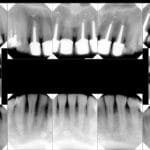So, you’ve had oral surgery, and you’re likely curious about those dissolvable stitches. This comprehensive guide explains everything you need to know about these tiny helpers, from what they are and how they work to aftercare tips and potential issues. Dive into the often-overlooked aspects of surrogacy and discover the answer to the critical question: do surrogates get paid if they miscarry?
Understanding Dissolvable Stitches
After procedures like wisdom tooth removal, gum grafts, or biopsies, your dentist or oral surgeon may use dissolvable stitches (also called absorbable sutures). These specialized stitches are designed to break down and disappear over time, eliminating the need for removal. They’re typically made from materials your body can safely absorb—either natural (like variations of catgut) or synthetic polymers.
What They Are & Why They’re Used
Dissolvable stitches provide several benefits:
- Increased Comfort: Compared to traditional stitches, they generally cause less irritation.
- Reduced Infection Risk: Eliminating the need for stitch removal lowers the chance of introducing bacteria.
- Fewer Appointments: No need for a follow-up visit for removal.
How They Disappear
Your body’s natural enzymes break down the suture material through a process called hydrolysis. Essentially, the water in your body interacts with the stitch material, causing it to gradually disintegrate. The exact timeframe varies, influenced by factors like the type of suture material, your individual healing rate, and the complexity of the surgery.
Dissolving Timelines & What to Expect
The typical timeframe for dissolvable oral stitches is one to two weeks. However, this can vary. For simple procedures like gum contouring, stitches might dissolve within a week, while more complex surgeries could take several weeks or even longer. As they dissolve, you might notice:
- Looser Stitches: This is normal and indicates the dissolving process.
- Fragments: You may see or feel small pieces coming out when you brush, eat, or rinse.
- Mild Irritation: Some gum irritation around the area is common.
Factors Affecting Dissolving Time
- Suture Material: Different materials have different absorption rates. Polyglactin (Vicryl) typically dissolves within a few weeks, while Monocryl (poliglecaprone 25) is often absorbed faster.
- Individual Healing: Just as some people heal from a scrape quicker than others, your body’s unique healing pace affects stitch dissolving time.
- Surgical Site: Stitches in areas with more movement (like near the tongue) may dissolve faster.
- Overall Health: Certain medical conditions or medications may influence healing.
Oral Procedures Using Dissolvable Stitches
These versatile stitches are used in a range of procedures:
- Wisdom Tooth Extraction
- Gum Grafts
- Gum Sculpting
- Biopsies
- Other Oral Surgeries
Post-Operative Care: Your Road to Recovery
Proper aftercare is essential for smooth healing. Follow these tips:
- Gentle Rinsing: Rinse with warm salt water as directed by your dentist.
- Soft Foods: Stick to easy-to-chew foods like yogurt, soups, and mashed potatoes.
- Careful Brushing: Be extra gentle around the stitches.
- Follow Instructions: Adhere to your dentist’s specific post-op instructions.
Handling Hanging Stitches
You might notice stitches feeling long or poking slightly. This can happen for several reasons, including intentionally longer initial length, uneven dissolving, snagging during brushing, or simply loose stitching from the start. Do not pull or cut them! If they’re excessively long, causing significant discomfort, or concerning you, call your dentist.
Potential Issues & When to Call Your Dentist
While dissolvable stitches are generally problem-free, complications can occur. Contact your dentist if you experience:
- Premature Stitch Loss (with bleeding)
- Increased Pain
- Swelling, Redness, or Heat Around the Wound
- Pus or a Foul Odor
- Wound Reopening
- Stitches Not Dissolving Within the Expected Timeframe
- Signs of Infection (fever, chills)
Current research suggests the dissolving process generally follows the patterns described above, but individual experiences can vary. Always consult with your dentist for personalized advice.
Can I Remove My Own Dissolvable Stitches?
No, you should not remove dissolvable stitches yourself. Premature removal can lead to:
- Infection: Opening the wound creates a pathway for bacteria.
- Delayed Healing: Stitches hold the wound together for optimal healing.
- More Noticeable Scarring: Proper wound closure minimizes scarring.
Alternatives to Dissolvable Stitches
While dissolvable stitches are common, other options exist:
- Non-Dissolvable Stitches: Require removal after a specific time.
- Surgical Glue: A stitch-free method that seals the wound.
Your surgeon will choose the best option based on your specific case.
This guide aims to provide comprehensive information about dissolvable stitches in the mouth. However, it should not replace professional medical advice. Always consult your dentist or oral surgeon for any concerns or questions about your specific situation.
- Revolution Space: Disruptive Ion Propulsion Transforming Satellites - April 24, 2025
- Race Through Space: Fun Family Game for Kids - April 24, 2025
- Unlocking the Universe: reading about stars 6th grade Guide - April 24, 2025
















